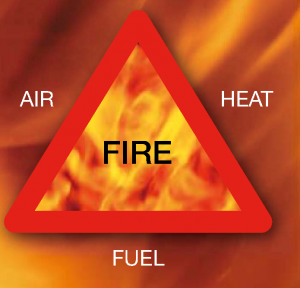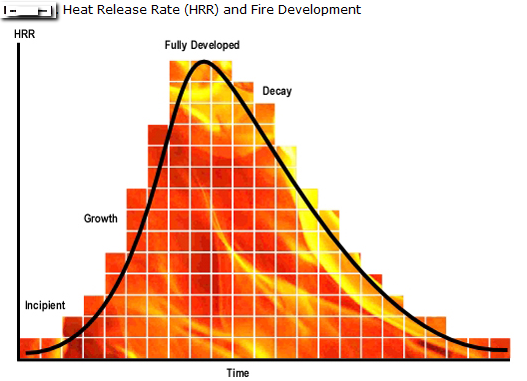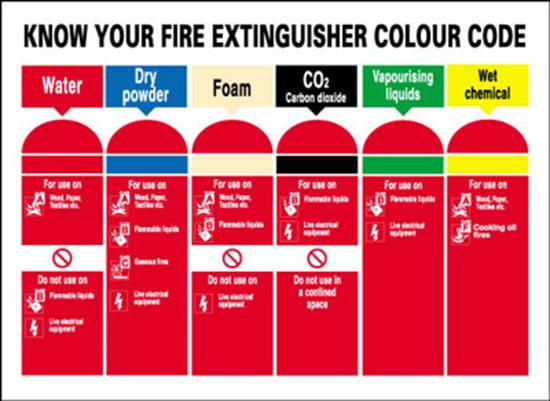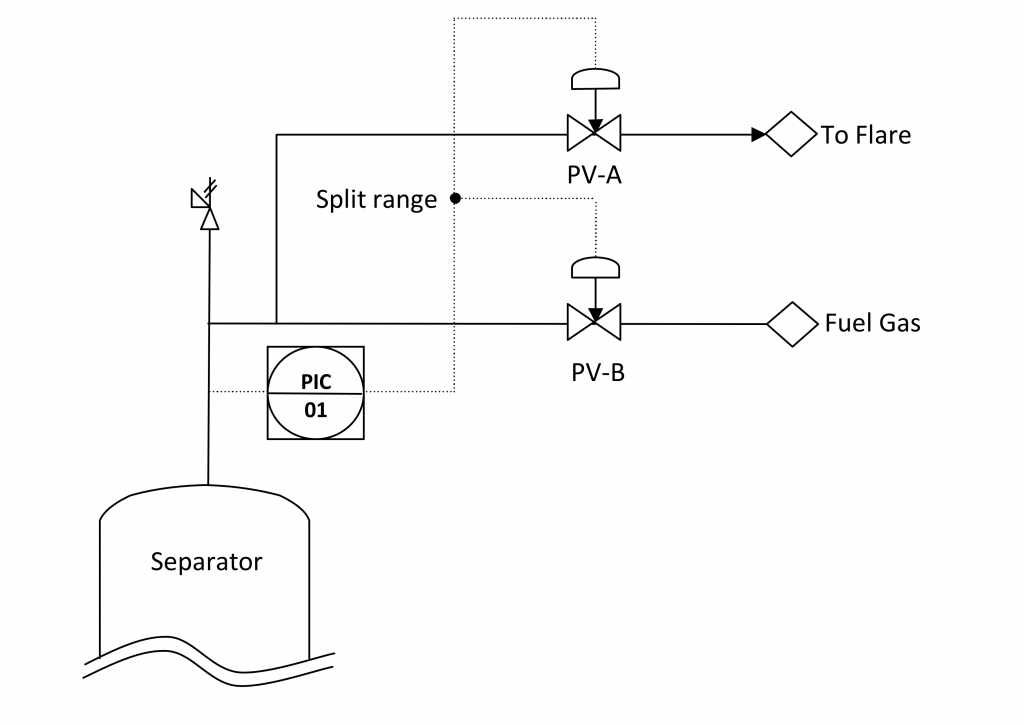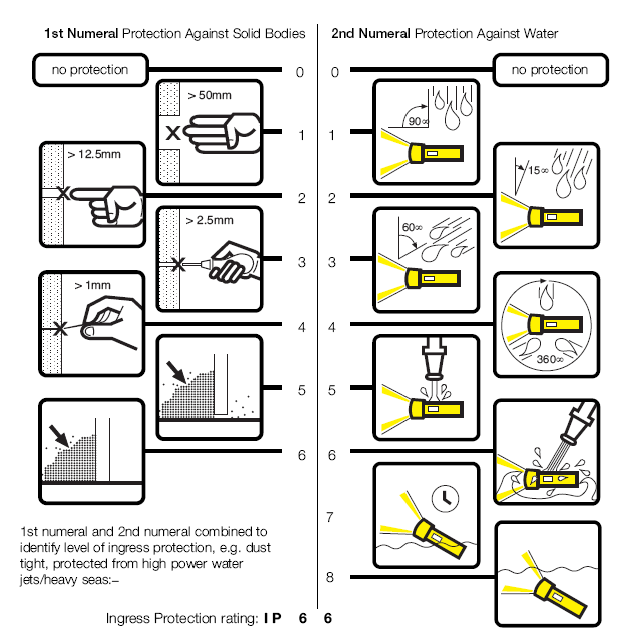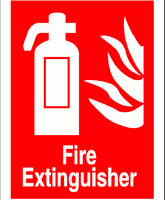The fire triangle represents the three essential components required for a fire to ignite and sustain itself: fuel, oxygen, and heat. Just like the sides of a triangle, these elements are interconnected and rely on each other to create and perpetuate a fire. Understanding the dynamics of the fire triangle equips us with the knowledge to mitigate fire hazards and respond appropriately in emergency situations.
In this post, we will study the details of fire triangle along with the stages of fire. we will also explore each component in detail and examine their role in fire development.
Table of content:
1. Definition of fire
2. Fire triangle
2.1. Heat
2.2. Fuel
2.3. Oxygen
3. Stages of fire
3.1. Incipient stage
3.2. Growth stage
3.3. Fully developed stage
3.4. Decay stage
Definition of fire
Fire is a chemical reaction that releases light, heat, and various combustion byproducts. It is a rapid oxidation process that occurs when a fuel source combines with oxygen, typically from the air, in the presence of sufficient heat to reach and sustain the ignition temperature of the fuel. The chemical reaction that takes place during a fire is known as combustion.
Fires can occur in various forms, including open flames, smoldering embers, or glowing hot surfaces. Fire requires the presence of three elements known as the fire triangle: heat, fuel, and oxygen. The heat provides the energy to initiate and sustain the combustion process. Fuel refers to any material that can burn, including solids, liquids, or gases. Oxygen is necessary to support the chemical reactions that occur during combustion.
Fire triangle
The fire triangle is a simple model used to describe the three essential elements required for a fire to occur and sustain itself. For many years, it has been widely accepted that the combination of the following three (3) factors contribute to the initiation of a fire. The three elements are:
- fuel
- a source of ignition/energy/heat
- oxygen
The combination of all these three (3) factors has therefore led to the widely known Triangle of Combustion. Consequently, when trying to put out a fire, we strive to remove at least one of these three components
Heat
Heat is the initial spark or energy source that raises the temperature of the fuel to its ignition point. This ignition temperature is the minimum temperature required for the fuel to start burning. Once the fuel reaches its ignition point, it begins to release energy in the form of heat and light, which further raises the temperature of the fuel.

Heat can be transferred in three ways: conduction, convection, and radiation. Conduction is the transfer of heat through direct contact. Convection is the transfer of heat through a circulating medium. Radiation is the transfer of heat through electromagnetic waves.
Safety managers can prevent fires by identifying and controlling sources of heat in the workplace. Here are some additional details about the sources of heat in the workplace:
- Open flames are a common source of heat in the workplace. They can be used for welding, cutting, and other tasks. However, they can also cause fires if they come into contact with flammable materials.
- Cigarettes are another common source of heat in the workplace. They can cause fires if they are not properly extinguished.
- Sparks can be generated by a variety of activities, such as grinding, brazing, and electrical work. They can cause fires if they come into contact with flammable materials.
- Hot surfaces can be found in a variety of workplaces, such as kitchens, manufacturing facilities, and power plants. They can cause fires if they come into contact with flammable materials.
- Radiated heat can be generated by a variety of sources, such as boilers, portable heaters, and the sun. It can cause fires if it comes into contact with flammable materials.
- Lightning is a natural source of heat that can cause fires.
- Static discharges can occur when two materials with different electrical charges come into contact with each other. They can cause fires if they come into contact with flammable materials.
- Arcing can occur when electricity flows through an air gap. It can cause fires if it comes into contact with flammable materials.
- Compression can cause fires if it heats up flammable materials.
- Exothermic chemical reactions are reactions that release heat. They can cause fires if they are not properly controlled.
- Spontaneous ignition is the ignition of a material without an external source of heat. It can occur in materials that are poorly ventilated or that are insulated.
Safety managers can prevent fires by identifying and controlling sources of heat in the workplace. Some specific steps that can be taken include:
- Ensuring that open flames are properly extinguished.
- Prohibiting smoking in the workplace.
- Using spark-resistant tools and equipment.
- Keeping hot surfaces away from flammable materials.
- Installing fire suppression systems.
- Training employees on fire safety procedures.
Fuel
Fuel refers to the material that is being burned to sustain the fire. Fuels can be solids, liquids, or gases, and they can come in a variety of forms. Different fuels have different properties, such as their flammability, burning rate, and ignition temperature.

There are three main types of fuels: solid, liquid, and gas. Solid fuels must be heated to a high temperature before they will ignite. Solid fuels include wood, paper, and coal. Liquid fuels will ignite if they are heated to their flash point. Liquid fuels include gasoline, fuel oil, and kerosene. Gaseous fuels will ignite at any temperature. Gaseous fuels include propane, acetylene, and natural gas.
The ease of ignition of a fuel is affected by its surface area. The more surface area a fuel has, the easier it will ignite. The safety manager should be aware of the different types of fuels in the workplace and take steps to prevent fires.
Here are some additional details about the factors that affect the flammability of a fuel:
- Flash point: The flash point is the lowest temperature at which a liquid fuel will produce enough vapors to form an ignitable mixture in air.
- Fire point: The fire point is the temperature at which a liquid fuel will continue to burn after the ignition source is removed.
- Boiling point: The boiling point is the temperature at which a liquid fuel will vaporize completely.
- Specific gravity: The specific gravity of a liquid fuel is a measure of its density compared to water.
The safety manager should be familiar with these terms and factors in order to assess the fire hazards in the workplace.
Oxygen
Oxygen is required for combustion to occur. When fuel is exposed to oxygen, it reacts and releases energy in the form of heat and light. Oxygen is present in the air we breathe, and its concentration in the air can affect the intensity and spread of a fire.

Oxygen is a reactant in the chemical reaction that causes fire. The amount of oxygen available affects the rate of combustion. When the oxygen content of the atmosphere falls below 15%, a fire will begin to smolder. When the oxygen content of the atmosphere falls below 8%, a fire will stop burning.
Oxygen can also be provided by other sources, such as oxidizers. Oxidizers are substances that release oxygen during a chemical reaction. Oxidizers can increase the rate of combustion and make fires more dangerous.
Safety managers should be aware of the presence of oxidizers in the workplace and take steps to prevent fires. Some common oxidizers include:
- Ammonia
- Bleach
- Chlorine
- Ethyl alcohol
- Hydrogen peroxide
- Methyl alcohol
- Nitric acid
- Potassium chlorate
- Sodium chlorate
- Sulfur dioxide
These substances should be stored in a safe location away from fuels. Safety managers should also train employees on the hazards of oxidizers and how to prevent fires.
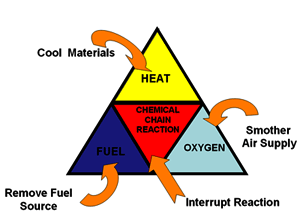
Fire Tetrahedron
Check this detailed post on fire tetrahedron.
Stages of fire
Fires can be categorized into different stages based on their development and behavior. The stages of fire are typically described as follows.
Incipient stage
The incipient stage is the first stage of a fire. It is characterized by a small ignition source and a limited amount of fuel involvement. The fire is usually localized and can be easily controlled or extinguished with a portable fire extinguisher. At this stage, the fire produces minimal heat and smoke.
There are a number of things that can be done to prevent fires from progressing beyond the incipient stage. These include:
- Properly disposing of smoking materials
- Avoiding overloading electrical outlets
- Keeping flammable materials away from heat sources
- Having a fire extinguisher on hand and knowing how to use it
Here are some tips for extinguishing a fire in the incipient stage:
- Use a portable fire extinguisher.
- Aim the nozzle at the base of the fire.
- Squeeze the handle and sweep the extinguisher back and forth across the fire.
- Continue to extinguish the fire until it is completely out.
Growth stage
As the fire continues to receive fuel and oxygen, it enters the growth stage. This is the stage where the fire is spreading rapidly and becoming more difficult to control. The fire will continue to grow as long as it has fuel and oxygen. The fuel can be anything that can burn, such as wood, paper, fabric, or gasoline. The oxygen can come from the air or from other sources, such as a fan or a breeze.
As the fire grows, it will generate more heat, flames, and smoke. The heat can cause damage to property and can also be dangerous to people. The flames can spread the fire to other objects, and the smoke can make it difficult to see and breathe. The growth stage is the most dangerous stage of a fire.
Fully developed stage
In the fully developed stage, the fire reaches its maximum size and intensity. The flames are large and produce significant heat and smoke. The fire spreads quickly, consuming available fuel and releasing a significant amount of energy.
At this stage, firefighting efforts primarily focus on containing the fire and preventing it from spreading further. This may involve using water, foam, or other extinguishing agents to cool the fire and reduce its intensity. Firefighters may also use physical barriers, such as hose lines or fire walls, to prevent the fire from spreading. The fully developed stage is the most dangerous stage of a fire.
Decay stage
As the available fuel starts to deplete, or if firefighting efforts are successful, the fire enters the decay stage. The fire's size and intensity diminish, and the amount of smoke produced decreases. While the fire is still a potential hazard, it is easier to control and extinguish at this stage.
This is the stage where the fire is starting to die down. The fire's size and intensity diminish, and the amount of smoke produced decreases. While the fire is still a potential hazard, it is easier to control and extinguish at this stage.
The decay stage can be caused by a number of factors, including:
- The fire running out of fuel
- The fire being extinguished by firefighters
- The fire being starved of oxygen
Once the fire enters the decay stage, it will continue to burn until all of the fuel is consumed or until the fire is extinguished.
It's important to note that these stages are general descriptions, and the behavior of fires can vary depending on the type of fuel, ventilation conditions, and other factors. Understanding the stages of fire helps firefighters and first responders determine the appropriate tactics and strategies to combat and extinguish fires safely and efficiently.

Classification of fire
The classification of fire is done based on the combustible material that can possibly catch fire, accordingly the safeguards against such different types of fires can be planned. Check this detailed post on classification of fire.
